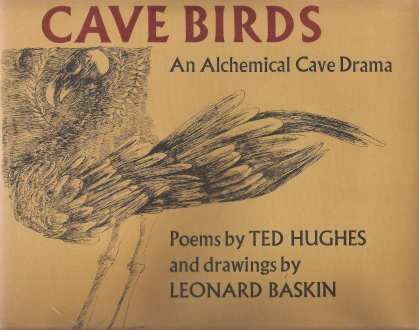
Cave Birds: An Alchemical Cave Drama - Ted Hughes (Poet Laureate)
Check my rate
| Main centres: | 1-3 business days |
| Regional areas: | 3-4 business days |
| Remote areas: | 3-5 business days |

| Main centres: | 1-3 business days |
| Regional areas: | 3-4 business days |
| Remote areas: | 3-5 business days |
Faber & Faber, 1978, hardcover, landscape format, illustrated, 62 pages, condition: as new.
The series of poems in Cave Birds opens with a remarkable composition which depicts a kind of psychic disturbance in which the heros self-satisfied analysis of the world and his place in it is devastated by the visitations of a variety of horrifying bird-beings who face up to him with persuasive substantiation of his material nature and his transience.
The history of the composition of this book is curious and complicated, and sometimes Hughes gives the impression of having been forced reluctantly to write it. It was written during a period, 1973-76, when to an observer Hughes seems to have been astonishingly productive, bringing to completion Gaudete, Season Songs and Moortown as well as Cave Birds. Yet, looking back on this period, he described it as a time when he lost concentration and failed to write what he should have been writing. This is partly a nostalgia for the creative ease and artistic directness of the Crow period, which is when he felt most creatively fulfilled. The poems in Cave Birds are more complex, richly-textured and occasionally obscure than Crow, which might explain why Hughes thought they were too studied
His sense of self is represented by a cockerel; and he is taken on a journey into himself, the first stage of which is a process of bereavement and renaissance. In fact reincarnation and sexual merger govern certain poems in the entire sequence. Sexual union is an allegory for wholeness of being and oneness with the world. Poems which are particularly noteworthy in this volume, in addition to those already named, are: The Jungle; The Guide; A Riddle; and Walking Bare.